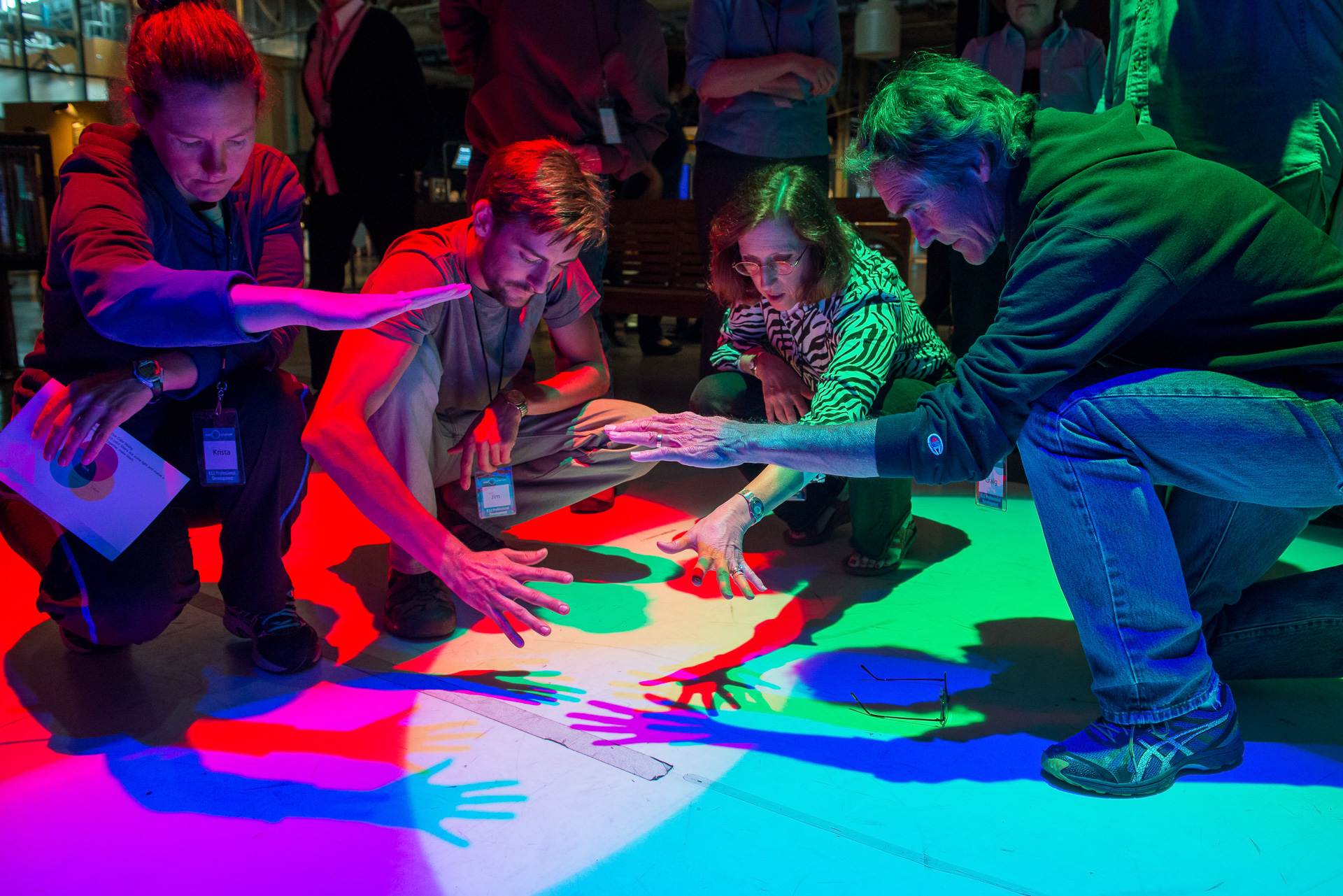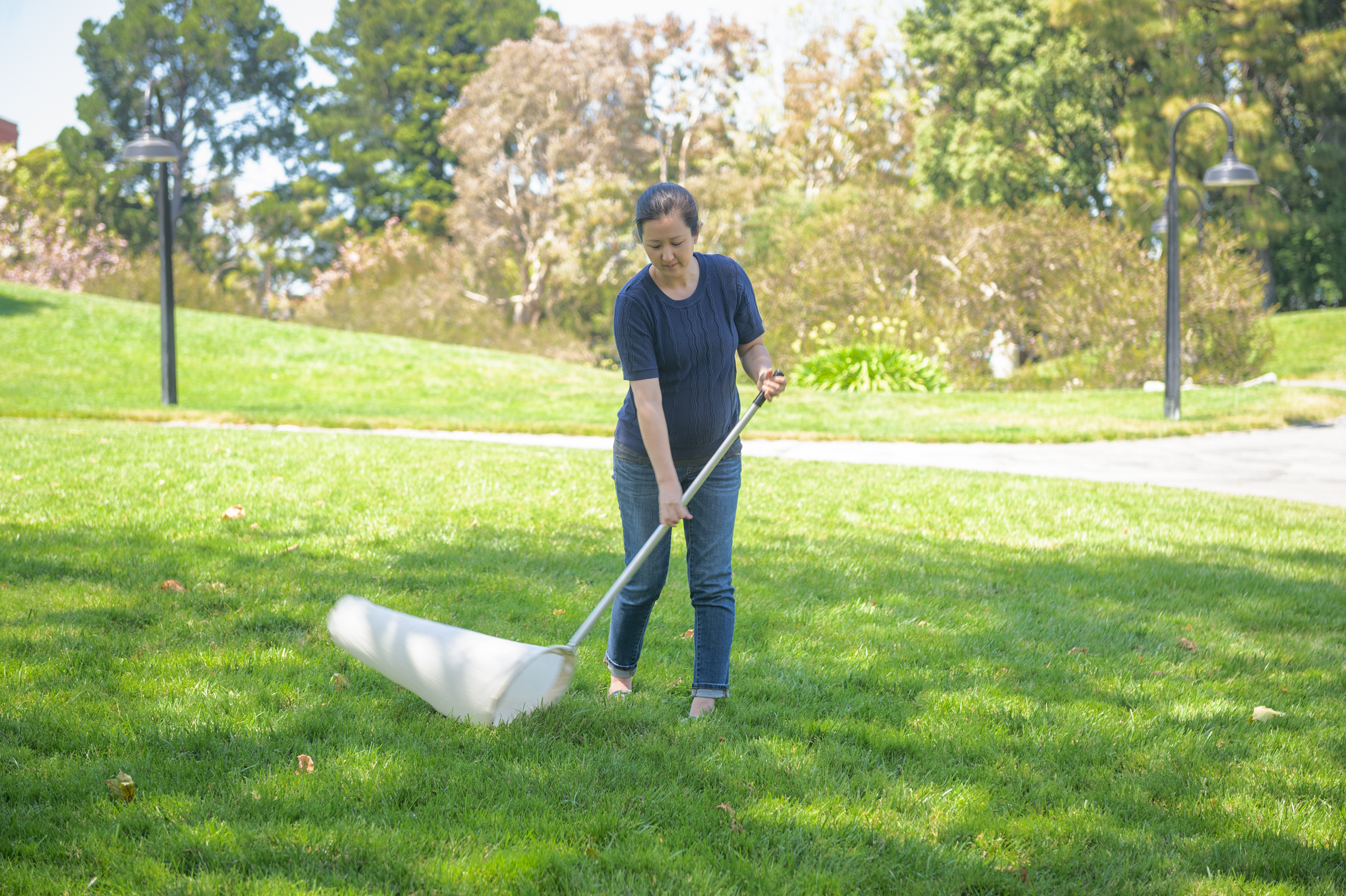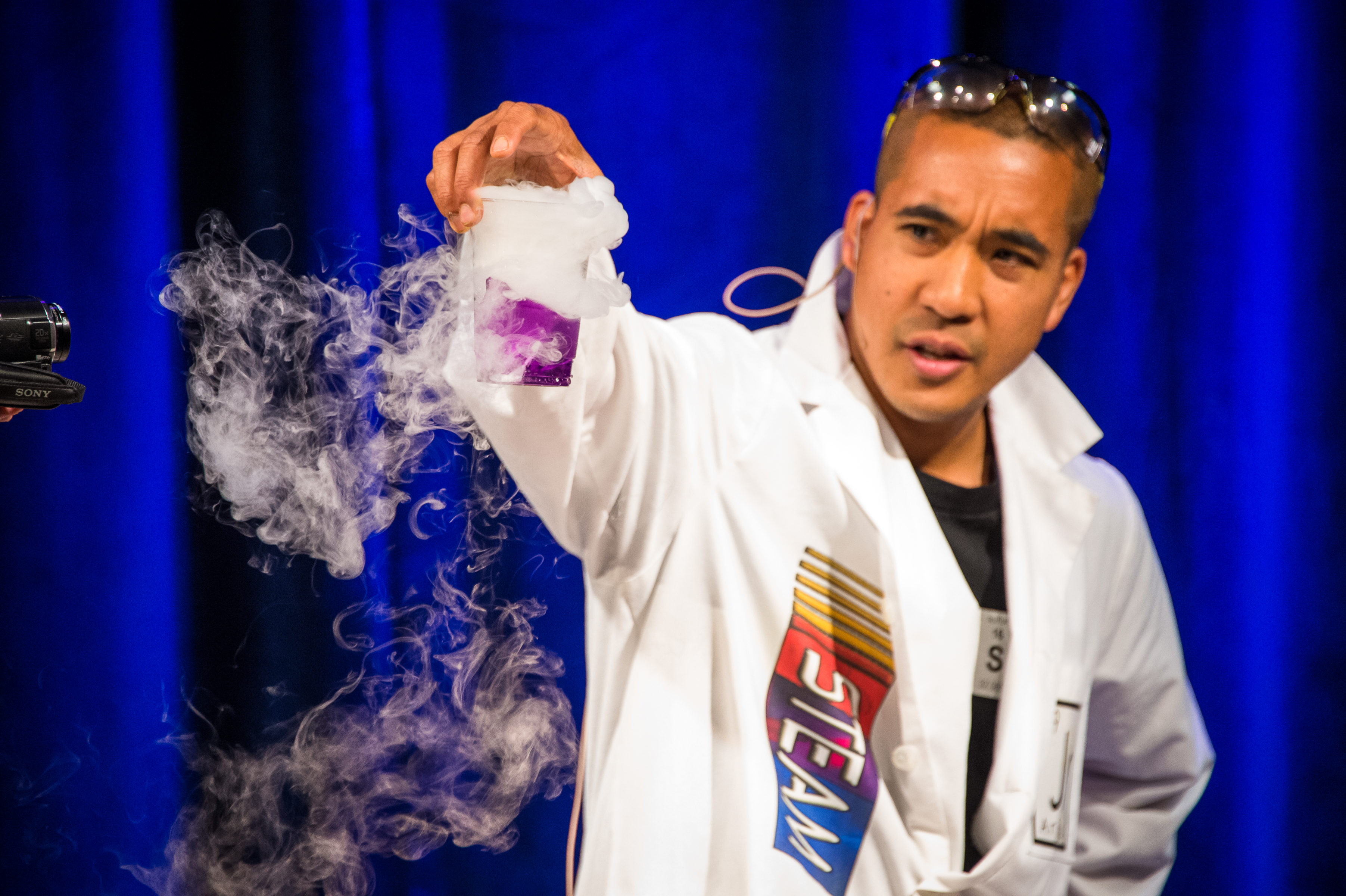
The Exploratorium in San Francisco is a museum of science, art and human perception where visitors don’t just look at exhibits — they play with them. For example, you can dance with your own shadow, touch a tornado, mix colors and break light apart. You can also suspend a ball in a stream of air and stamp your feet to create a miniature earthquake. The museum has been creating interactive exhibits since 1969 for science buffs of all ages.
It’s a fantastic field trip, but visiting the Exploratorium is just one of many ways educators can take advantage of what it has to offer. There’s also a plethora of free online and in-person resources and trainings available to teachers throughout California that are designed to make science fun, engaging and hands-on for K-12 students. In fact, the Exploratorium is playing a strong role in supporting the implementation of the Next Generation Science Standards (NGSS) across the state.
“Our goal is promoting equitable K-12 science education for all students in California by supporting teachers at all levels of their careers,” says Lori Lambertson, director of the Exploratorium’s Teacher Institute. “We have professional development geared for beginning teachers, experienced science teachers, and those in leadership positions like TOSAs [teachers on special assignment] and department heads. We
believe that science keeps students interested in what’s going on around them — and that science can be integrated into all subject matter.”
Professional development a priority

Daisy Yeung uses a bug-catcher for a science experiment.
The Teacher Institute provides professional development for middle and high school teachers, and the Institute for Inquiry focuses on K-5 science education. Both programs work online and in person and utilize scientists and classroom teachers, who collaborate on the creation of workshops, experiments and other programs. Through state funding, private donations and grants, teachers receive stipends to participate in most workshops, which occur outside of school time. There is also a Summer Institute for educators and a science teacher induction program.
Daisy Yeung, a science coach for the Sequoia Union High School District in Redwood City, began professional development at the Teacher Institute as a second-year high school science teacher in 2009. “I reached out to them,” says the Sequoia District Teachers Association member. “It’s unique, because instead of offering the same workshops over and over, they are constantly developing new classes, updating their curriculum, and responding to the needs of teachers and changes in education.”
“They are constantly developing new classes, updating their curriculum, and responding to the needs of teachers and changes in education.”
—Daisy Yeung, Sequoia District Teachers Association
Yeung spent a year as a teacher in residence at the Exploratorium, working with scientists and helping to create professional development. Then she returned to her district as an instructional coach and continues her affiliation in the Exploratorium’s K-12 Science Leader Network.

Jacob Aringo conducts an experiment with cabbage, using it as an acid-base indicator.
“I love that the Exploratorium builds community among science teachers almost like a family,” she says. “They support you in ways you never realized that you needed. And you have so much fun at the workshops. There’s a sense of playfulness. When I return, I’m excited and rejuvenated, which trickles down to the students.”
Jacob Aringo, a STEAM (science, technology, engineering, arts and math) teacher at Hoover Middle School in San Francisco, says professional development and working with the Teacher Institute have transformed how he teaches and interacts with students.
“It’s all about inquiry-based learning and taking a constructivist approach to learning and teaching. I’ve noticed the kids have become more engaged and interested in exploring.”
—Jacob Aringo, United Educators of San Francisco
“Now, in my class, we explore phenomena by asking students, ‘What do you notice?’ I’ve noticed the kids have become more engaged and more interested in exploring. We do a lot of activities that allow students to conceptually and/or physically break things apart to understand what each component does and then put them together to see how each component interacts with other components.”
Aringo, a member of United Educators of San Francisco, participates in the K-12 Science Leader Network and has conducted a workshop on incorporating project-based learning into science instruction. He was pleased to receive feedback from participants that they were able to use what they learned in their day-to-day lessons.
Investing in science education for all
In October, statewide science leaders will convene at the Exploratorium to develop a blueprint to advocate for equitable K-12 science education.
It is necessary, observes the National Academies of Science, because “many students, particularly students of color living in poverty and rural areas, lack access to high-quality science education across K-16, and have been shut out of many opportunities in STEM. As a diverse and innovative state, California should be investing in and prioritizing better, more equitable science education.”
The Exploratorium’s staff are eager to get the message out that the museum can be an integral part of this effort. “We want to put the Exploratorium on the map as an organization that promotes equitable K-12 science education and supports teachers,” says Lambertson. “We are pleased that more teachers and school districts are becoming aware of what we offer.”
“The Exploratorium is an excellent resource for science teachers,” says Yeung. She adds that some educators are still struggling to implement NGSS, especially at the secondary level where there is less support from the state. “I recommend that educators visit the Exploratorium’s website and begin by checking out the hands-on activities that can be done easily. It’s about fun, learning, and yes, exploring.”
Treasure Trove for Teachers
The Exploratorium has made more resources available virtually during the pandemic with several in Spanish. Some in-person workshops are planned, too. The resources are described in detail at exploratorium.edu. They include:
- Science Snacks: Teacher-tested, hands-on activities for K-12 that bring explorations of natural phenomena into the classroom and home. Listed by grade levels, subjects and NGSS. Examples include a “Penny Battery” that lights an LED with 5 pennies; a “Vocal Visualizer” that uses your voice to transform laser light into dazzling patterns; and a “Squeeze Box” where youngsters can speed up geologic time with a sedimentary squeeze.
- Digital Teaching Boxes: Curricular resources for middle and high school life science teachers, from cell biology to genomics to human evolution.
- Tools for Teaching and Learning: The most comprehensive landing page for K-12 educator resources.
- NGSS Planning Tools: Tools that help teachers adapt activities to align with NGSS and sequence activities to explain a phenomenon.
- COVID-19 activities and resources: Explore the science of viruses and how they impact us.
Free, hands-on, synchronous online workshops for educators designed to support students:
- Exploring Bubbles Workshops: K-5 students use soap bubbles to explore, observe, collect data, and look for patterns.
- Phenomenal Science Activities: Activities for secondary science teachers.
Watch and Do Science: Hands-on learning videos for K-5 teachers to use with students in virtual or in-person environments, with minimal prep time and common household items. In English and Spanish.
- Exploring Ramps and Rollers: Record data, compare observations, and learn how small changes can lead to big differences in how objects roll.
- Exploring Shadows: Use light and shadow to see how shadows change shape, size and direction.
- Exploring Balance: Explorations with multiple weights.
The Discussion 0 comments Post a Comment